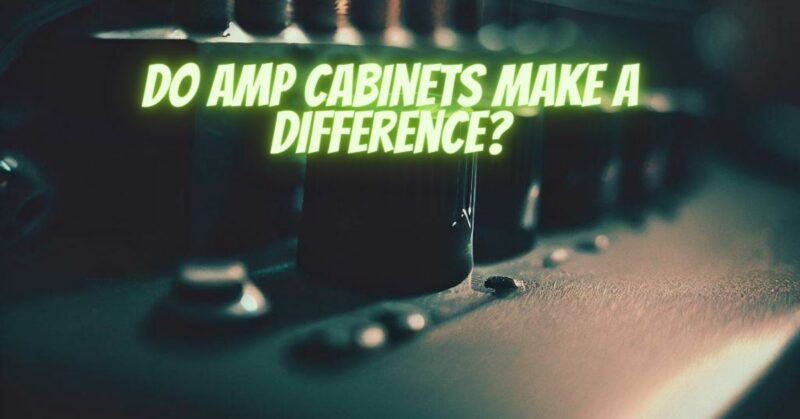When it comes to crafting the perfect guitar tone, many factors come into play, and one of the most crucial components is the amplifier speaker cabinet. It’s often said that “the speaker makes the amp,” highlighting the significant role that amp cabinets play in shaping your guitar sound. In this article, we’ll explore the impact of amp cabinets on your guitar tone and why they make a difference.
- The Importance of Amp Cabinets
An amplifier cabinet is more than just a box to house your speakers; it’s an integral part of the amplification process. The choice of cabinet significantly influences the overall tone, character, and projection of your guitar or bass sound.
- Speaker Type and Size
One of the primary ways amp cabinets affect your tone is through the choice of speaker(s) and their size. Different speaker types, such as Celestion, Eminence, or Jensen, have distinct tonal characteristics. For example, a cabinet with Celestion Vintage 30 speakers is known for its warm midrange and vintage rock tones, while Eminence Swamp Thang speakers are favored for their American-style brightness.
- Speaker Configuration
Amp cabinets come in various configurations, denoted by numbers like 1×12, 2×12, 4×12, etc., indicating the number and size of speakers in the cabinet. Smaller cabinets with fewer speakers tend to produce a focused sound with less low-end thump, while larger cabinets offer more projection and a fuller low end.
- Tonal Coloration
Amp cabinets can color your tone in subtle but significant ways. The cabinet’s construction material, such as plywood or MDF (medium-density fiberboard), can influence the resonance and tonal characteristics. Plywood cabinets are often favored for their more natural sound, while MDF cabinets may have a slightly darker tone.
- Resonance and Open/Closed Back
The design of the cabinet, whether it’s open or closed back, can affect the way the speakers project sound and how resonance is controlled. Closed-back cabinets tend to produce a tighter low end and focused midrange, while open-back cabinets have a more open and airy sound.
- Mix and Match
Many professional guitarists and recording engineers experiment with mixing and matching different cabinets to create unique tones. Combining cabinets with different speakers and configurations can lead to rich, complex sounds that stand out in a mix.
- Live and Studio Considerations
The choice of amp cabinet can also depend on your playing environment. Closed-back cabinets are often preferred for live performances, as they provide better onstage isolation and less feedback. Open-back cabinets may be more suitable for studio recording, as they can contribute to a more natural room ambience.
- Effects of Mic Placement
In both live and studio settings, the way you mic the amp cabinet can further shape your tone. Mic placement, distance, and angle can emphasize specific frequencies and nuances, giving you even more control over your sound.
Amp cabinets unquestionably make a substantial difference in your guitar or bass tone. From the choice of speaker type and configuration to cabinet construction and resonance control, every aspect contributes to the sonic signature of your amplifier. As a guitarist or bassist, it’s essential to consider your playing style, musical genre, and sonic preferences when selecting an amp cabinet. Experimentation with different cabinets and speaker combinations can lead to a world of tonal possibilities, allowing you to find the perfect cabinet to complement your unique style and sound.


